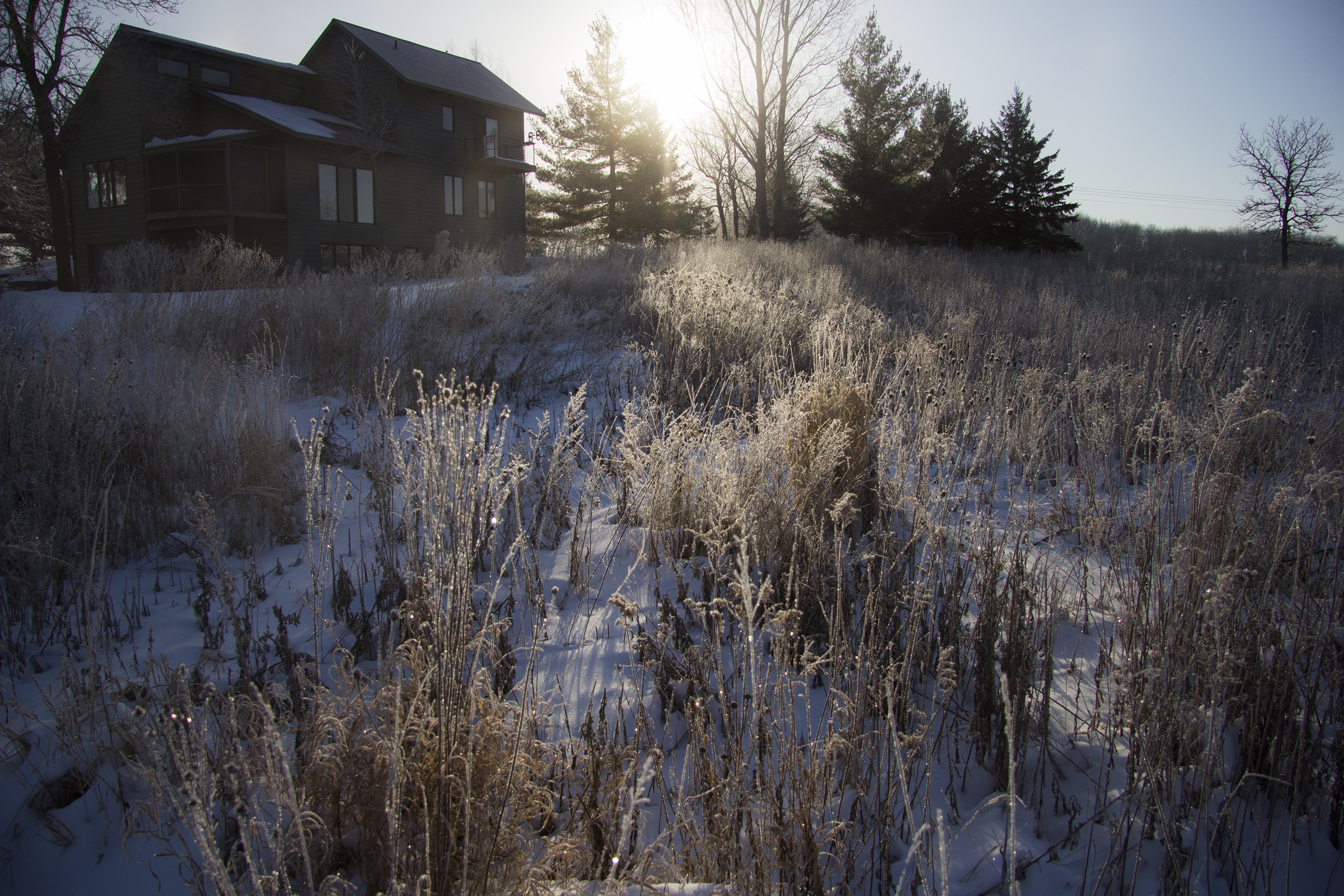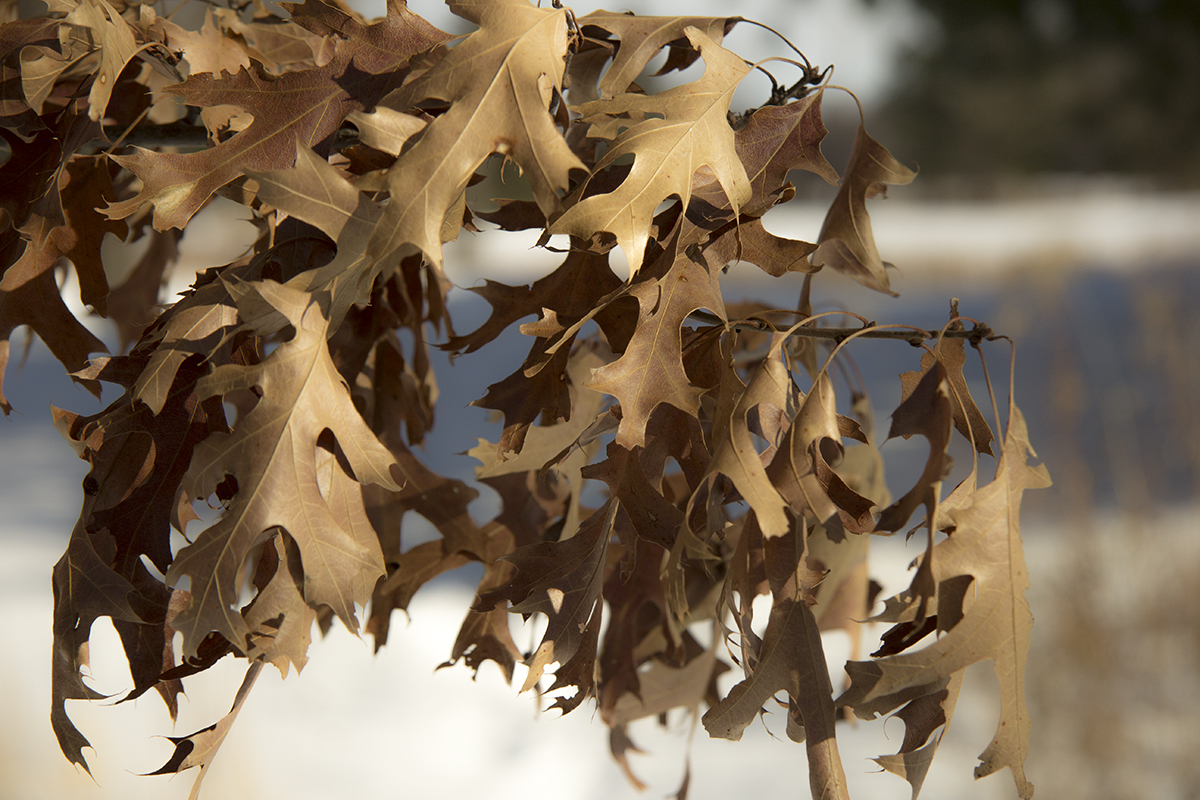With the temperatures getting up into the the mid 40s, things are happening. The Willow catkins are puffing out, the Poplars are preparing to pollinate, and the Sliver Maples are beginning to bud.
But with the frost still four feet deep and lakes still frozen, some plants are finishing their winter work, such as the Pin Oak.
Pin Oaks keep their leaves through the winter and then drop them in spring. If you find a Pin Oak that is exposed to the sun and shake it this weekend, it will drop it's leaves.
This photo of a Pin Oak was taken yesterday, April 19th, just behind our greenhouse. Pictured under it is Jeff Evander, an employee.
As you can see, after shaking the tree, 90% of its leaves are now on the ground.
Leaves give off a lot of moisture as they photosynthesize, and the ducts that channel the moisture are there even after the tree goes dormant in the fall. So shedding leaves is a way to conserve moisture through the winter. We see this in almost all deciduous trees, except for some species of Oaks and Beech trees.
All of this begs the question: what possible strategy might the Oak have for keeping its leaves until spring?
Some have argued that Oaks evolved and have adapted to dryer soils, and that retaining leaves in the fall and dropping them in the spring provide the trees with organic matter (which provides fertilizer and retains moisture). Others suggest that the lower leaves on the tree act like a snow fence, trapping snow and thus providing more moisture into spring. Still others have argued that the leaves provide frost protection to the buds behind the leaves. A more popular theory is that the Oaks and Beeches are evolutionarily delayed, and are on their way to shedding leaves in the fall, but need a couple thousand more years of evolution to get there.
So remember, you only have one or two more thousand years to shake (don't stir, as with a James Bond martini) a Pin Oak in spring and see the leaves drop.








